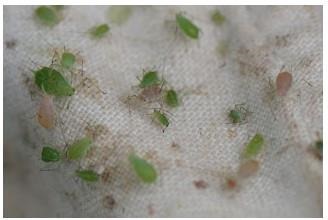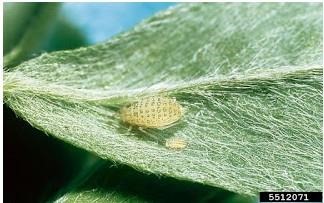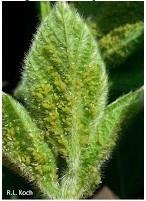The economic threshold for small grains and forage grasses is 4-5/square foot.
For more information see: https://extension.umn.edu/corn-pest-management/armyworm.
Aphids
Aphids in alfalfa

Not all aphids in alfalfa are pea aphids. There are some mixed infestations of pea aphids and spotted alfalfa aphids.

Spotted alfalfa aphid
Soybean aphids

Soybean aphids are starting to slowly build in some southern MN fields, while in other indicator fields, populations remain undetected or very low. I am not aware of anything at threshold, but I imagine there could be some fields.
Aphids will lose out to spider mites in areas of prolonged moisture stress.
Two-spotted spider mites

It took a while, but infestations are now starting to show up in drier areas of central, south central and southwestern Minnesota. Mites are favored by hot, weather and moisture-stressed crops. Once an infestation is started, a single, or maybe several rain events will not stop a spider mite infestation.
We need prolonged cool weather to slow mite reproduction and cool temperatures with high humidity to encourage the fungi that help control mites.
Resistance to chlorpyrifos (Lorsban) has been found in some Minnesota spider mite populations. This article needs a bit of an update, but for pesticide options, see: https://blog-crop-news.extension.umn.edu/2020/07/will-two-spotted-spider-mites-throw.html.
Source : umn.edu